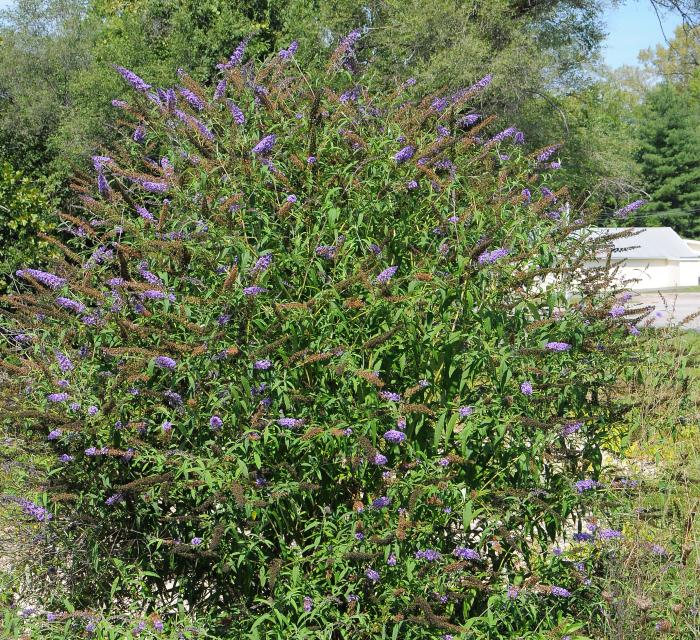Buddleja davidii Franch.
Common Butterfly Bush

Introduced
CC = *
CW = 3
MOC = 4
© SRTurner
Buddleja davidii Franch.Common Butterfly Bush | |
 |
Introduced CC = * CW = 3 MOC = 4 |
© SRTurner |
|
Family - Scrophulariaceae Habit - Shrub. Stem - Arching and spreading, to 4 m, pubescent with minute stellate hairs, also with small, light yellow glands.
Leaves - Opposite, sessile or short petiolate. Blades elliptic or lanceolate, sharply pointed, upper surfaces sparsely hairy, lower surfaces tomentose and moderately glandular, appearing whitish. Margins finely toothed. Stipules herbaceous, appearing as small flaps of tissue between leaf bases.
Inflorescence - Terminal on branches, dense panicles to 20 cm long.
Flowers - Calyx 2.5-4.0 mm long, actinomorphic, hairy, glandular, shallowly 4-lobed, lobes triangular. Corollas 9-12 mm long, actinomorphic, trumpet-shaped, internally hairy, lobes with irregular margins, bluish purple with an orange throat. Stamens 4, inserted. Ovary 2-locular. Style inserted, with single club-shaped stigma.
Fruits - 6-8 mm long, narrowly ellipsoid to cylindric-ovoid. Seeds 2-4 mm long, ellipsoid, slightly flattened, tapered to a slender wing at each end, the surface smooth, brown.
Flowering - July - October. Habitat - Roadsides, homesteads. Origin - Native to Asia. Lookalikes - None. Other info. - This species is often cultivated as an attractant for butterflies and other insects, and for its attractive and unusual appearance. In the wild it is usually found only at former homesites, persisting from deliberate plantings, and rarely escaping cultivation in Missouri. In fact, the first escape in Missouri was first noted by Mühlenbach in 1979. It is relatively uncommon throughout most of the U.S., except for the Pacific Northwest, where it is considered a pest. The flowers are sources of nectar and attract butterflies. Photographs taken near Washington, Franklin County, MO, 8-27-2017 (SRTurner). |